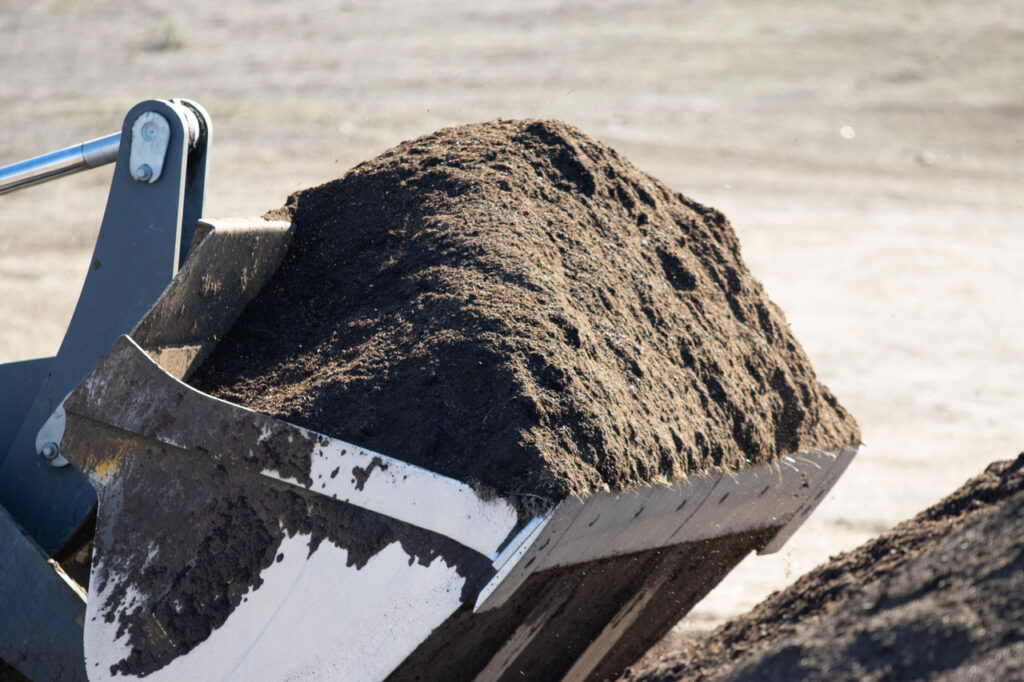This week has been an exciting week on the ranch, as we had 450 tons of beautiful compost delivered and spread on 30 acres of our cattle pasture.
We had seed mixed into the compost before it was delivered, including nutritious clovers, sub clovers and plantains, as well as a high percentage of perennial grasses.

Applying compost to soil is one of the best ways to incorporate carbon into the soil. This has become known as “carbon-farming” and by sequestering the carbon into the soil it is a way of reducing greenhouse gas emissions. Not only does the compost introduce carbon into the soil and keep it out of the atmosphere, but it also enriches the soil and improves the productivity of the pastures, growing more forage to feed the cattle.
Additionally, when the cattle graze on those perennial grasses, the grazing encourages the grasses to grow and develop, putting down deep root systems which aerate the soil and provide habitat for microorganisms that live in the soil. All that subterranean life is not only improving the health of the soil, but it represents a huge sink of carbon that is sequestered in the soil instead of being released to the atmosphere where it would contribute to global warming. This is one way that grazing animals on well-managed pasture helps to reduce greenhouse gas emissions that contribute to global warming.

Our partners in this project are the Marin Resource Conservation District, which is helping to create our carbon-farm plan, Fibershed, which has provided grant support from the USDA and the CA Department of Food and Agriculture, and certifies our products as Climate Beneficial, and MALT (the Marin Agricultural Land Trust), which holds a conservation easement on our ranch and advises us on land stewardship. The photos of compost day were taken by Matt Dolkas of MALT.

